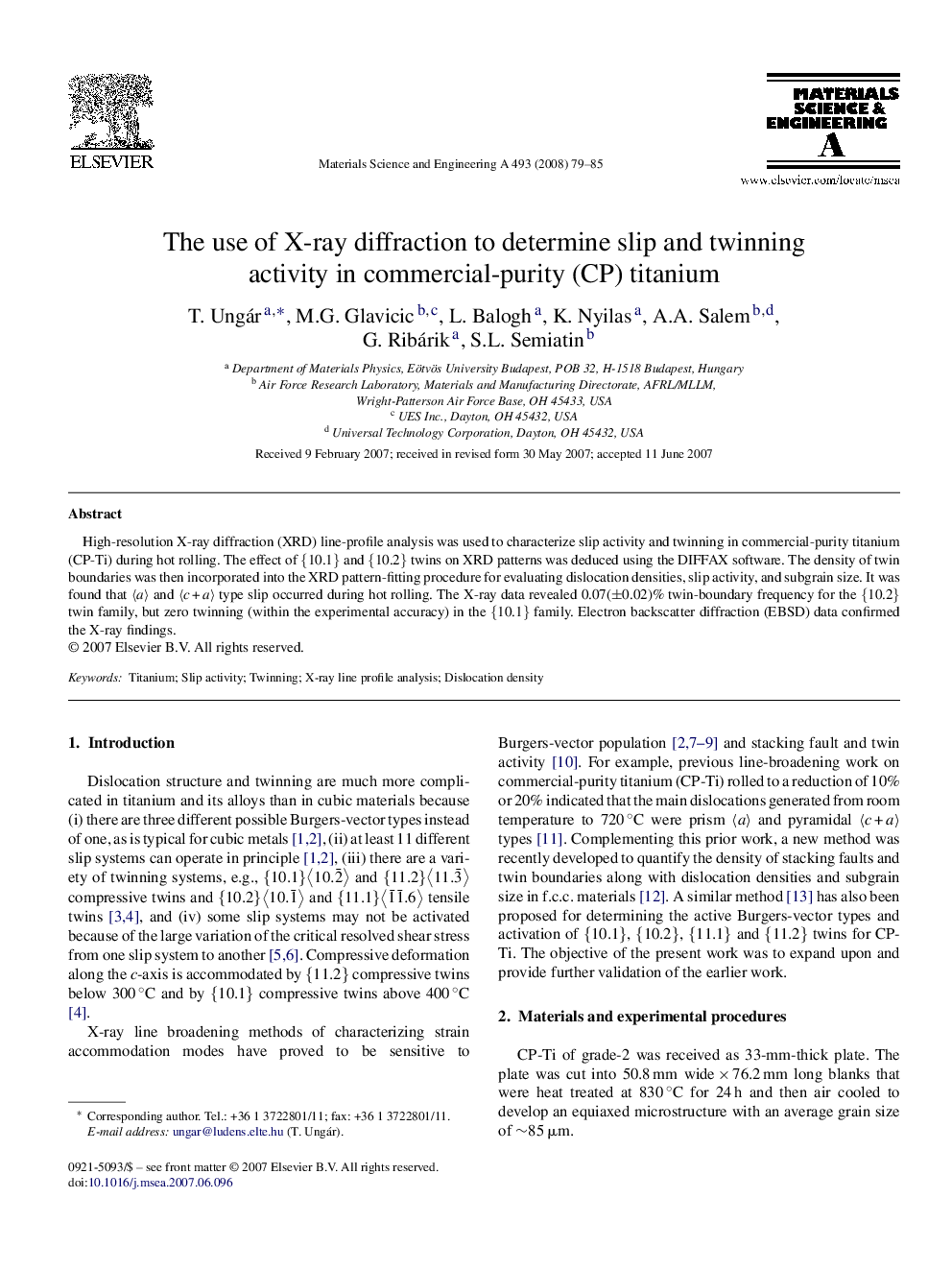| Article ID | Journal | Published Year | Pages | File Type |
|---|---|---|---|---|
| 1581899 | Materials Science and Engineering: A | 2008 | 7 Pages |
Abstract
High-resolution X-ray diffraction (XRD) line-profile analysis was used to characterize slip activity and twinning in commercial-purity titanium (CP-Ti) during hot rolling. The effect of {10.1} and {10.2} twins on XRD patterns was deduced using the DIFFAX software. The density of twin boundaries was then incorporated into the XRD pattern-fitting procedure for evaluating dislocation densities, slip activity, and subgrain size. It was found that ãaã and ãc + aã type slip occurred during hot rolling. The X-ray data revealed 0.07(±0.02)% twin-boundary frequency for the {10.2} twin family, but zero twinning (within the experimental accuracy) in the {10.1} family. Electron backscatter diffraction (EBSD) data confirmed the X-ray findings.
Related Topics
Physical Sciences and Engineering
Materials Science
Materials Science (General)
Authors
T. Ungár, M.G. Glavicic, L. Balogh, K. Nyilas, A.A. Salem, G. Ribárik, S.L. Semiatin,
